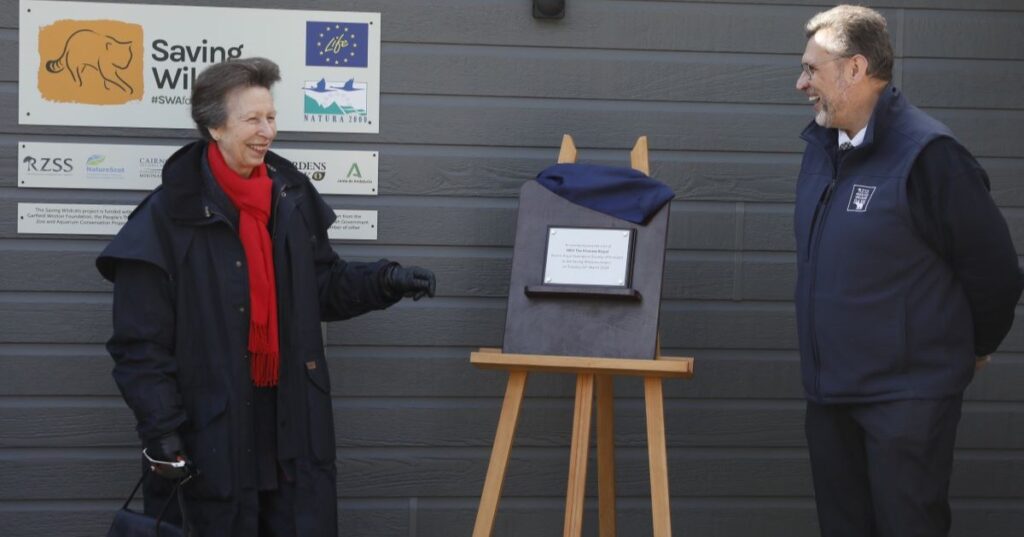
Wildcats: HRH The Princess Royal visits project to restore wildcats to Scotland
HRH The Princess Royal has visited the Saving Wildcats project to find out about the team trying to restore the Highland tiger to Scotland.
The project, based at the Royal Zoological Society of Scotland’s (RZSS) Highland Wildlife Park, is working to save the cats which are one of the UK’s most endangered carnivores.
The wildlife conservation charity’s royal patron heard from the team responsible for restoring the wildcats, the work they do to breed the species for release, mitigate the threats the cats face, and monitor their progress in the wild.
Following a tour of the project hub, where Her Royal Highness learned about the project’s work with landowners and the challenges in monitoring and studying wildcat behaviour in the pre-release enclosures and in the wild. She then unveiled a plaque to commemorate the visit.
Some 16 wildcats have been paired up for the third consecutive breeding season, while 19 other were released in 2023. Saving Wildcats is monitoring the 18 which have survived.
Dr Helen Senn, head of conservation and sciences programmes at RZSS, said: ‘The Saving Wildcats project has achieved a lot over the past few years, culminating in the successful first-ever release of wildcats to Britain in the Scottish Highlands this summer.
‘However, it will take many more years of work for a population of wildcats to get to the point where it can sustain itself. We are so grateful for the support of Princess Anne to the approach that we are taking to recover this amazing species.
‘For a ‘first release’ project like this, it was especially important that we have a commitment use the best scientific methods to monitor progress and we discussed with the princess the use of CCTV and collaring technology to assist our approach, both at the conservation breeding centre based at Highland Wildlife Park and in the wild.
‘It is also vital that we have the support of those who live alongside wildcats and we talked about the methods that we are using to communicate closely with landowners over the releases.’
Wildcat facts:
The endangered wildcats live in grassland and woodland where they hunt for mice and voles.
The wildcat would have once been found throughout mainland Britain. Persecuted for centuries, its range steadily declined until by the First World War it was only found in the north west of Scotland.
Like most cat species, wildcats are solitary except when breeding. They can be active by day and night, and their diet varies across the country. Rabbits are the favoured prey of wildcats, but when or where rabbit numbers are low, voles and mice are probably the next most important food source for wildcats in Scotland.
Read more Wildlife stories here.
Subscribe to read the latest issue of Scottish Field.
TAGS

